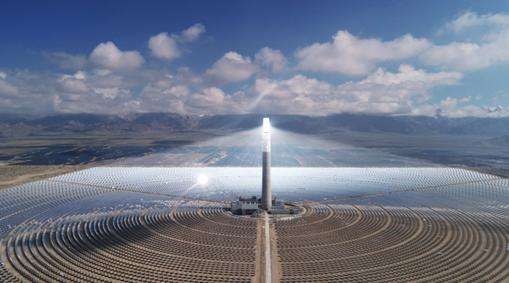The working principle of thermal power generators is the conversion of energy from factories that use coal, oil and natural gas as fuel to produce electrical energy.
In the generator, clean air is filtered by the air filter and high pressure atomized diesel is injected from the injector. The two gases are fully mixed in the cylinder and the piston moves. The movement compresses the mixed gas, causing the volume to decrease and the temperature to increase.
Once the temperature reaches a certain temperature, the diesel ignites and the gas mixture burns violently, causing the volume to expand, thus pushing the piston down. The diesel engine uses this principle to operate the generator and convert diesel energy into electrical energy.
Presentation of the thermal power plant:
Thermal power plant A thermal power plant, called a thermal power plant, is a plant that uses combustible materials (such as coal) as fuel to produce electricity. Its basic production process is as follows: When fuel is burned, water is heated to generate steam, which converts the chemical energy of the fuel into thermal energy. The steam pressure causes the steam turbine to rotate and the thermal energy is converted into mechanical energy. Then, the steam turbine drives the generator to rotate, converting the mechanical energy into electrical energy.
The main engine is usually a steam engine or gas turbine. In some smaller power plants, an internal combustion engine may also be used. They all produce electricity using the pressure drop in the high temperature steam or gas conversion process andhigh pressure via a turbine in low pressure air or condensed water.
Tell me the whole process of producing electricity in a thermal power plant
If it is a backup generator that has a power failure current, then after the power failure, first turn off the air switch of the mains power supply, the neutral line of the generator is connected to the neutral line of the mains power supply, and the live wire is connected to the three Live wires under air switch. Therefore, if all three are energized. the wires are connected in parallel, it can be used normally. If electricity comes, first unplug the generator, separate the three live wires under the pneumatic switch to restore it to its original state, and then close the pneumatic switch.
Principle and electricity production process in a thermal power plant< p>Electricity production process in a power plantthermal:
1. Transport the fuel to the power plant, and after transportation and processing, it is sent to the boiler for combustion. .
2. The chemical energy contained in the fuel is converted into thermal energy and transferred to the boiler water, transforming the water into steam at high temperature and high pressure.
3. Superheated steam with higher pressure and temperature is sent to the steam turbine through the pipeline, causing the steam turbine to rotate to do the work , the temperature of the steam is quickly reduced, and finally discharged into the condenser. In this process, the thermal energy of the steam is converted into the mechanical energy of rotation of the turbine rotor.
4. The mechanical energy of the turbine rotor is converted into electrical energy via the generator.
5. The electrical energy generated by the generator is sentconnected to the transmission line through the step-up transformer to provide users.
The above concerns all energy flows generated by thermal power plants.Procedure.
There are three types of energy conversion processes in thermal energy production: fuel, chemical energy, steam, thermal energy, mechanical energy and thermal energy electric. Simply put, it uses fuel to generate heat and heat water. forms superheated steam at high temperature and high pressure, then the steam enters the turbine along the pipeline. It expands and produces work continuously, impacts the high-speed rotation of the turbine rotor, and drives the generator rotor (electromagnetic field) to rotate. The stator coil cuts the magnetic lines of force and emits electrical energy. It then uses the step-up transformer to reach thesystem voltage and is connected to the grid to transmit electrical energy outside. Finally, the cooled steam is further boosted by the feed water pump and returned to the boiler to repeat the above cycle process.














